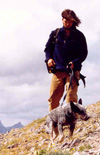 |
|
Prof. Jennifer Nemhauser |
Recently hired to the Department of Biology, Professor Jennifer Nemhauser is studying the basic processes in life – she wants to understand how a cell knows who it is, and where it is in an organism. Plants provide the best model to look at how cells are affected by environmental factors because plant development is heavily influenced by the environment. The exciting thing about her research on the early stages of seedling development is that these cells are extremely adaptable and may provide clues for how to improve crop yields, as well as suggest solutions for human health issues, like genetic disorders, hormonal problems, and even cancer.
“…often when you are well into a project, you will find other applications [for your research] and make serendipitous discoveries,” said Nemhauser.
One great thing about plants is that they are incredibly complex chemical factories. Many medicinal discoveries have been made through plant research. Lots of medications and supplements come from plants, and there are applications for drugs derived from plant hormones like phytoestrogens and steroids. Part of Nemhauser’s research is looking at the function of these and other hormones that are present in plants. While all plants have the same major hormones, some have additional specialized hormones for specific functions. For example, Solanaceaous plants like tomatoes have a hormone called systemin which is important for defense against herbivores. There are thousands of small molecules that vary in function in different species of flora around the world. Many have yet to be discovered.
Nemhauser sticks to the basics with her research, using the common, fast-growing Arabidopsis as a model to study the early development of seedlings. Her lab does quantitative work, measuring variance in growth rates of seedlings, depending on how they are affected by different environmental factors. She looks at three basic parts of the plant during germination: the root, the embryonic stem (called the hypocotyl), and the embryonic leaves (called the cotyledons). This first week of development is a very critical time for new plants, as it determines whether the plant lives or dies. There is just enough energy in the seed reserve for the plant to get up to the light to produce its own “renewable” energy from photosynthesis. If there are any factors in its environment that obstruct or slow down this growth process for the plant, it has to quickly adapt in order to survive.
Plants can’t move to deal with the problems they encounter like animals can. They have to literally grow away from adversity, or adapt physically to deal with changes to their environment. This gives them an amazing amount of “plasticity.” Two genetically identical plants can become very different in size and shape if they experience different amounts of light, wind, water, soil, temperature, nutrients, obstacles, and/or neighbors. Nemhauser wants to understand the signals that prompt plant cells to adapt to their environment, and know what hormones are producing these changes.
The importance of studying “gene expression that creates morphological change” is that this science can apply to other organisms – like humans. There have been several recent findings in plant development which may lead to medical breakthroughs. A promising new approach for delivery of gene therapy called microRNAs was first identified in plants. Another recent discovery has applications for cancer and tumors. The human version of a plant protein which controls seedling growth was recently found to regulate levels of p53, a protein which guards against tumor formation.
“Invest in basic biology and you get untold benefits,” says Nemhauser. “You don’t know what you’ll find until you look.”



 Together this dog and his trainer, Heath Smith, search for sign from grizzlies in Alberta, Canada. They are part of a novel and non-invasive animal tracking program started at the Center for Conservation Biology. This program is one of several at the department that conducts research to help save the lives of endangered species.
Every bit counts. Your choice to support the Department of Biology could make a big difference in how our future turns out.
Together this dog and his trainer, Heath Smith, search for sign from grizzlies in Alberta, Canada. They are part of a novel and non-invasive animal tracking program started at the Center for Conservation Biology. This program is one of several at the department that conducts research to help save the lives of endangered species.
Every bit counts. Your choice to support the Department of Biology could make a big difference in how our future turns out.